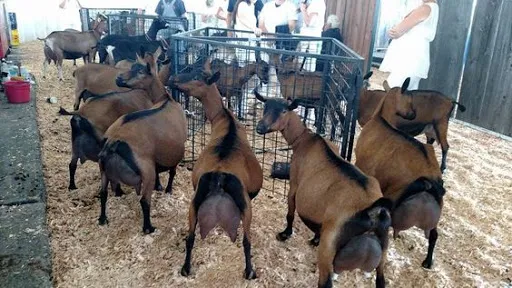Livestock farming can be lucrative, whether dairy or beef farming. All that is required is good management practices, including the right breed selection, good feeding, and disease control, among others.
With dairy goat farming gaining popularity in Kenya, farmers are looking for ways to maximize their earnings while maintaining quality.
Dr. Joseph Othieno, a veterinary surgeon and the head of communications at FAO-Kenya says the popularity of dairy goat farming in Kenya has been fuelled by the perception that goat milk is better in terms of nutrient content and causes fewer allergic reactions.
He notes that common goat breeds in Kenya include Anglo-Nubian, Toggenburg, Alpine, and Saanen.
Othieno says one of the reasons as to why farmers opt for this venture is due to the animal’s short gestation period of about 150 days (five months).
”Combined with the twinning ability, this means a dairy goat like the Kenyan Alpine can give you up to four kids a year. They attain sexual maturity at four to five months, but it is advised to mate them at seven to ten months, which still places them in the quick growers league and ensures a high annual turnover,’’ he says in a post on The Standard.
How to make Sh1m from half an acre of turmeric in nine months
Dairy goats have a lactation period of 284 days with peak production at four to six weeks after kidding with a good feeding regime. With good management, a dairy goat can produce up to three liters a day.
”Add a lifespan of over 15 years, and you are assured of getting good income from a single goat,’’ Othieno adds.
According to him, another advantage of dairy goat farming is their ease of management. Compared to cows, goats consume less feed, and most of it is easily available.
In addition, they are less labor-intensive and can be kept in a relatively smaller area. The animal is also hardy, and the farmer only needs to worry about a few health problems, meaning low veterinary costs are incurred.
However, despite the potential of dairy goat farming, Othieno says various challenges hinder farmers from reaching their maximum potential.
He says one of the issues that makes dairy goat farming a nightmare is getting a reliable market for goat milk. Moreover, little processing or value addition prevents farmers from raking a fortune from the venture.
”Most of the milk currently produced is sold at the farm gate with little processing or value addition. Some potential products from goat milk include bottled milk, ice cream, yogurt, and cheese,’’ Othieno adds.
He advises that for profitable dairy goat farming, a farmer should seek guidance from a veterinary doctor, ensure a good internal and external parasite control programme, and maintain a good feeding regime.








